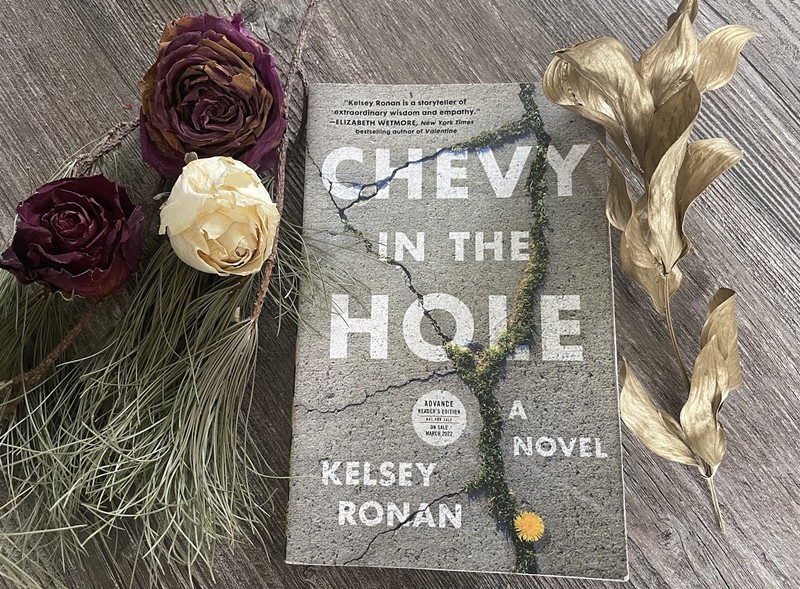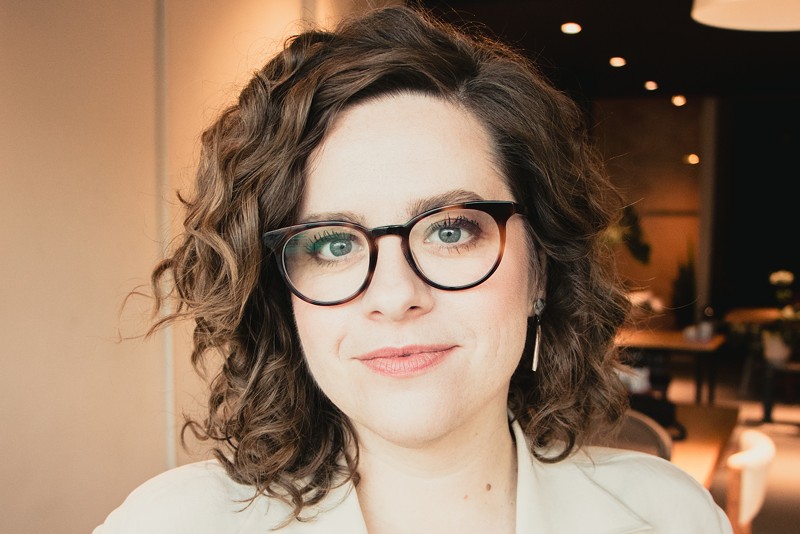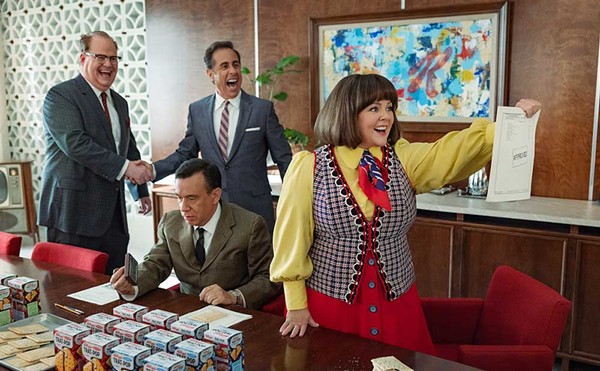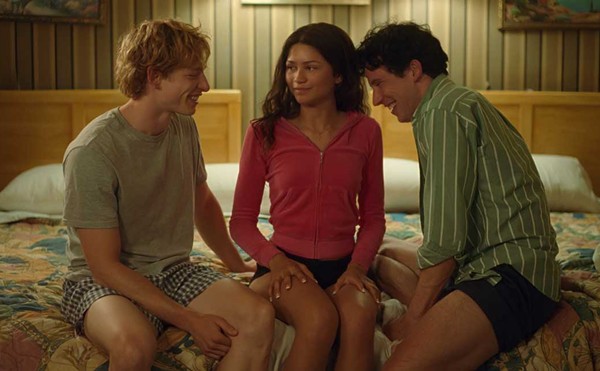Author Kelsey Ronan shows love for Flint in debut novel 'Chevy in the Hole'
[
{
"name": "GPT - Leaderboard - Inline - Content",
"component": "35519556",
"insertPoint": "5th",
"startingPoint": "3",
"requiredCountToDisplay": "3",
"maxInsertions": 100
}
]
The Thanksgiving before Flint’s lead-polluted water was officially declared a "crisis" in 2015, Kelsey Ronan had returned to her hometown for dinner with her family. Though her mother wouldn’t cook with the water or give it to her cats, Ronan still showered in it. By the time she went back to St. Louis, where she lived at the time, her hair was matted and falling out.
“Then the news broke in January and my mom got sick,” she tells Metro Times over the phone. “She has chronic breathing issues and had been breathing in lead vapor for a while, and ended up hospitalized. She was struggling with shortness of breath, had to go on steroids and do a series of breathing treatments.”
Despite it all, Ronan still has love for Flint, where she grew up, and her mother still lives there to this day. Ronan’s debut novel Chevy in the Hole puts this complicated love on full display using the city’s troubled history as the backdrop. The book was released on Tuesday, March 15, and has already caught the attention of national outlets like the New York Times.
Much like Detroit, the city of Flint has two different narratives. If you believe the national media, you might think it’s a miserable ghost town with only five people left. But for many people who grew up there, it’s a place where love flourishes, families persevere, and life goes on.
“In the news, it was like only the poorest people that have no options are left in Flint. I was paranoid, but I never knew anyone who was moving or planned on moving,” Ronan says. “Especially early on during the water crisis, there were rumors that we were going to get evacuated and there was this paranoia that Flint was just going to disappear. Now it’s like, ‘there’s no one left but two farmers, and the city is deserted,’ and it’s super weird because that’s not the Flint that I know.”
Throughout Chevy in the Hole we see the characters struggling with a long line of generational trauma from poverty, addiction, and low self-worth. August Maloy, aka “Gus,” has just been resurrected from the dead after overdosing in the bathroom of the Detroit restaurant where he works. His brush with death causes him to move back to his hometown of Flint and volunteer at a community garden, where he meets local activist Monae. Despite being near polar opposites, and not creating any true emotional intimacy, they end up falling in love. I’ll leave it at that. No spoilers here, I promise.
The book jumps around several timelines and we see Gus and Monae’s families live through the General Motors sit-down strike in the 1930s and The Great Migration of Black southern workers to Flint in the 1960s.
Though Chevy in the Hole is fiction, it does a great job at exploring Flint’s very real history of environmental racism. During The Great Migration, for example, many folks flocked to Flint because they thought getting a job at General Motors was the pathway to building a better life. But that wasn’t really true for Black folks who were often forced to live in segregated neighborhoods that were badly polluted by GM factories.
“They came up, were given the most poorly paid jobs, and were forced to live in the shadow of the foundry,” Ronan says. “Every morning they’d be scraping soot off their windows, and there was a high presence of lung cancer in these highly segregated Black neighborhoods in the ‘60s. The fact that later people were straight-up drinking toxic water, most of them being POC and poor, shows a history of the most vulnerable people being sacrificed for larger profit-making.”
Eventually, Gus and Monae find themselves stuck in the Flint water crisis, adding even more trauma to their family history. Their stories present a relatable tale of people trying to live a good life despite an onslaught of adversity.
The characters are flawed, as all of us are. To be flawed is to exist as human, but despite our shortcomings, we all deserve to be loved. The relationship is a perfect metaphor for Flint itself — a city riding a systemic wave of disregard and misfortune that people seem so reluctant to humanize.
There is one elephant in the room, however, depending on who you ask. Ronan is a white woman and Monae and her family, who appear throughout the book, are Black. I’m not of the mindset that white writers and artists cannot create Black characters, but not everyone agrees with me.
Sometimes non-POC get it completely wrong when trying to create art from the perspective of a culture outside their own. A character uses language or behaves in a way a Black person probably wouldn’t in real life. The nuance of cultural traditions and symbols is lost because the creator doesn’t take the time to research and understand.
That couldn’t be further from the truth of what Ronan has done with Chevy in the Hole.
Unfortunately, putting creative work into the world opens the floodgates for people of many different mindsets and beliefs to interact with it. Ronan is fully aware of the potential criticism but says she couldn’t have written a story about Flint — a majority Black city — with no Black characters.
“I’m from Flint and there is no way to write a book set in Flint that is populated entirely by white characters, where characters of color are non-dimensional people hanging around in the background,” she says. “For me to be like, ‘well, I’m white and people are going to be mad’ feels potentially even more offensive, inaccurate, and like literal whitewashing. I’m very aware there is a lot of conversation around who gets to tell what stories. I went into it really feeling confident in the depth of historical research, and the sources I was pulling from while being critical of the many ways in which my internal bias’ could come out.”
She adds, “I hope whatever I fuck up, that some grace is offered to me, but if there is any conversation that I shouldn’t have done this, I feel pretty receptive to that.”
It’s clear Ronan has not only done her research but has crafted this love letter to Flint with compassion. It’s also clear the book deeply resonates with people — she’s been on a roll with book signings and author talks all around Detroit since Chevy in the Hole was released.
Ronan has two more talks coming up, both in Detroit: 7 p.m. on Friday, March 18 at 27th Letter Books and 6 p.m. on Tuesday, March 22 at Pages Bookshop.
Chevy in the Hole can be purchased from both of the shops above, as well as Barnes & Noble.
Stay connected with Detroit Metro Times. Subscribe to our newsletters, and follow us on Google News, Apple News, Twitter, Facebook, Instagram, or Reddit.








